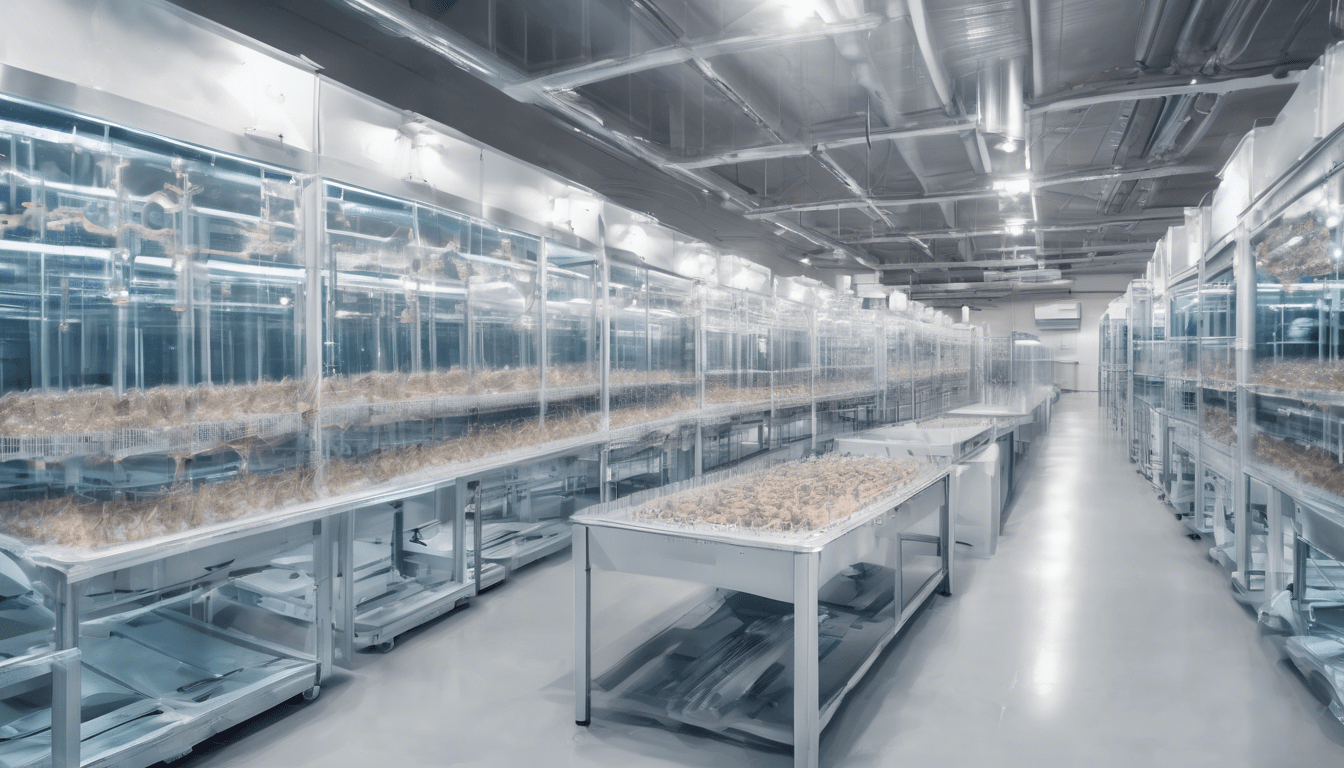Automation transforms hatcheries into models of efficiency, reducing manual labor while boosting hatch rates and consistency. By integrating advanced sensors, IoT, and automated systems, hatcheries can optimize incubation, climate control, and egg handling. This technological shift not only accelerates output but drives significant cost savings, positioning operations for sustainable growth. Embracing automation offers a strategic advantage—enhancing productivity, ensuring quality, and preparing hatcheries for future innovations in poultry and aquaculture.
The Role of Automation Technologies in Modern Hatcheries
Automation technologies have transformed hatcheries by enhancing efficiency and precision in critical processes. Key automation tools in modern hatcheries include egg handling systems, incubation management solutions, and advanced climate control units. These technologies reduce manual labor while improving hatch rates and chick quality.
Have you seen this : Navigating Market Shifts in the UK: What Are the Latest Trends to Watch?
Egg handling automation focuses on gentle sorting and transportation, ensuring minimal damage. Incubation management systems precisely control temperature and humidity, vital for embryo development. Climate control technologies maintain optimal environmental conditions throughout the hatchery.
Sensors and the Internet of Things (IoT) are integrated extensively for real-time monitoring. These enable automatic adjustments and alert operators to any deviations immediately, preventing potential losses. The combination of these automated systems streamlines operations, enhances biosecurity, and supports data-driven decision making.
Also to see : Top hydrogen storage options: prioritizing safety and capacity
For those interested in exploring the adoption of such technologies, comprehensive information is available at https://www.ecat-id.com/en. This resource offers valuable insights into the advancements and practical benefits of hatchery automation.
Improving Operational Efficiency Through Automation
Automation has revolutionized hatchery operations by significantly improving efficiency across multiple processes. One key area is egg handling and sorting. Automated systems reduce manual labor by selecting and moving eggs with minimal human intervention. This not only speeds up the process but also enhances accuracy, drastically cutting down on errors compared to manual sorting. The result is an increase in hatchery throughput, as eggs are processed more quickly and safely, while worker injury risks from repetitive tasks are minimized.
In the incubation phase, automation introduces precise control over temperature and humidity. Advanced systems regulate these conditions continuously, ensuring optimal environments for embryo development. These automated controls improve hatch rates by maintaining ideal conditions without fluctuations that could occur with manual adjustments. Moreover, they contribute to reduced energy use and less waste, as climate factors are fine-tuned for efficiency rather than left to broader manual settings.
Climate control within the hatchery benefits enormously from automation and data analytics. Intelligent systems monitor environmental variables and adjust them in real time, maintaining consistently favorable conditions that lead to higher success rates in hatching. This precision prevents costly mistakes associated with environmental fluctuations. Furthermore, the long-term operational savings are substantial due to smarter energy consumption and fewer materials wasted, promoting both economic and environmental sustainability.
By embracing automation, hatcheries can achieve smoother workflows, improved productivity, and safer working conditions while optimizing resource usage through sophisticated system controls. For more details on how such technology transforms the industry, visit https://www.ecat-id.com/en.
Cost Reduction and Economic Benefits of Hatchery Automation
Automation in hatcheries brings significant cost savings, primarily by cutting labor expenses. Traditional manual processes require numerous skilled workers, which raises operational costs and dependency on workforce availability. By implementing automated systems, hatcheries can streamline tasks such as egg candling, temperature regulation, and chick sorting with minimal human intervention. This shift not only reduces staffing requirements but also limits human error, directly impacting productivity.
Another critical benefit is the lower mortality rates achieved through precise environmental control. Automation ensures optimal conditions—temperature, humidity, ventilation—are consistently maintained. This leads to healthier embryos and higher hatch rates, enhancing the hatchery’s profitability by producing more viable chicks. The economic impact is substantial: fewer losses translate to a better return on investment.
Moreover, modern hatchery automation features smart systems designed for energy efficiency and reduced maintenance costs. Intelligent sensors and adaptive controls optimize resource use, cutting electricity and water consumption without compromising performance. Automation also minimizes wear and tear, as equipment operates within ideal parameters and alerts operators to potential issues early. These efficiencies reduce both direct and indirect costs, bolstering the economic case for automation.
By reducing labor costs, minimizing mortalities, and saving energy and maintenance expenses, hatchery automation delivers a robust economic advantage that can transform operations and improve competitiveness in the poultry industry.
Challenges and Future Trends in Hatchery Automation
Navigating challenges in hatchery automation requires addressing several core issues. The initial investment is often substantial, covering advanced equipment and infrastructure upgrades. This expense can deter smaller operations but is necessary for long-term efficiency gains. Another significant challenge is staff training; workers must become proficient with new technologies, requiring time and resources to ensure smooth adoption. Technology integration also poses difficulties, as diverse automated systems must communicate seamlessly to optimize operations.
Looking ahead, future trends promise to transform hatchery processes. AI-driven hatchery management is emerging as a pivotal innovation, offering predictive insights and real-time adjustments to improve hatch rates and reduce losses. Robotics are becoming more sophisticated, handling tasks from egg sorting to biosecurity measures, minimizing human error and labor costs. Additionally, data analytics is enabling hatcheries to harness historical and real-time data, driving smarter decision-making and operational adjustments for sustainable growth.
Strategic planning remains crucial. Hatchery managers should focus on adopting scalable technology that aligns with their growth goals and consider systems that provide a clear return on investment. Emphasizing continuous learning and flexible integration can ensure competitive advantage in a rapidly evolving industry.
Conclusion: Strategic Advantages of Hatchery Automation in Poultry and Aquaculture
Strategically, hatchery automation offers long-term operational resilience and scalability that traditional methods struggle to match. Automated systems streamline critical processes, reducing human error and ensuring consistency across production cycles. This resilience means that hatcheries can adapt more easily to market demands and expansion plans, establishing a foundation for sustainable growth.
Automation directly boosts productivity and product quality by optimizing incubation conditions and monitoring each stage meticulously. Enhanced precision in temperature, humidity, and ventilation control results in higher hatch rates and healthier poultry or aquatic species. Improved product quality not only meets regulatory standards but also aligns with consumer expectations for sustainable and ethically produced animal protein.
Importantly, hatchery automation supports sustainable practices and resource efficiency. By minimizing waste and utilizing energy more effectively, automated hatcheries reduce their environmental footprint. This aligns well with the growing global emphasis on sustainability in food production.
Together, these strategic benefits demonstrate why hatchery automation is no longer a luxury but a necessity for modern poultry and aquaculture operations seeking efficiency, reliability, and sustainability.







